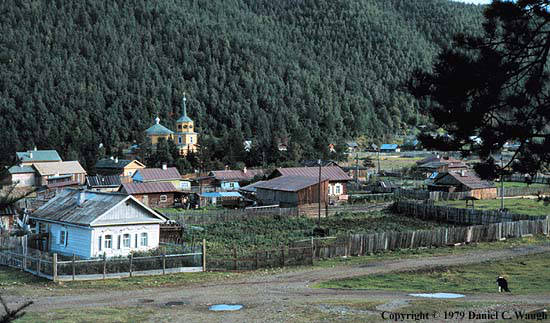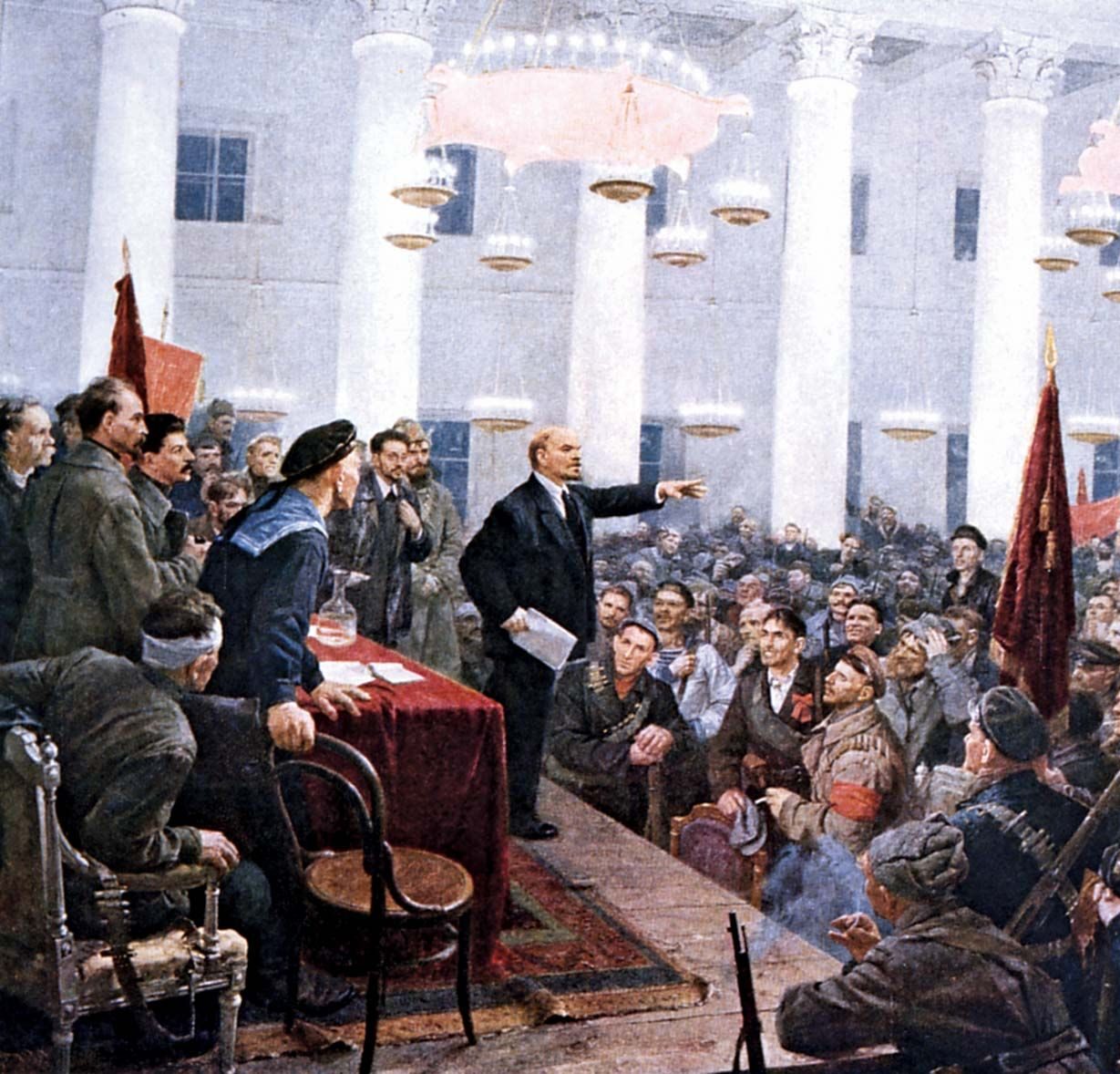
From Tolstoy to Solzhenitsyn
One of the most prevalent themes in Russian literature stretching back to the days of Tolstoy and Dostoevsky is the “idealization” of the Russian peasant and village. The life of Russian peasants has always been a meek one. Crushed by the burdens of Serfdom and forced to work the land for a living, Russian peasants had been stuck in a time in which most European nations had escaped. Despite this, the Russian peasants and villages have always played an idealistic role in the way many Russians think about the Russian nation and its people. Despite the hardships of peasant life, which range from things such as long working days, exorbitant taxes (by Tsarist and Soviet officials), and systematic abuses of women and children; Russian writers such as Tolstoy and Dostoevsky exalt peasant life. They focus on the simplicity and closeness to nature that they feel village life offers peasants, and which can not be found outside of the village and which modernization destroys. It is important to note that this idealization of the Russian peasant and village was most prominent in the mid 1800’s, when the institution of serfdom was being threatened, and life in Russia was fundamentally changing.

Peasants in a Workers State
After the Bolshevik Revolution the peasants once again faced the burden of supporting the Russian State. The Bolsheviks relied on intrusive and harsh measures known as war communism to collect grain and other foodstuffs from peasants in order to feed the Red Army and large industrial centers. This left the peasants on the edge of starvation, and eventually provoked a famine known as the Povolyzhye. This along with the Kronstadt rebellion, other mass peasant unrest and most importantly victory in the civil war, encouraged the Bolsheviks to soften their position on the peasantry. This ushered in the era of the N.E.P, in which a small scale market was allowed to exist alongside the state’s monopoly on all other sectors of the economy. This allowed peasants some breathing room and permitted them to once again put their grain up for sale on a competitive market. The N.E.P along with the early redistribution of land to many small scale peasants in the early days of the October Revolution allowed for some peasants to begin to build a semi-prosperous life. However, all this ended with Stalin’s introduction of Collectivization in the early 1930’s. Collectivization was introduced because the N.E.P proved inefficient to provide for the country’s growing food needs. Additionally, until now Communism had not yet touched the countryside and the Party was eager to Socialize the peasants. Collectivization was violent and brutal, and would mark the beginning of the end of traditional peasant life and the Russian village.
“Twentieth-century rural Russia has seen civil war and famine, a brutal and devastating collectivization of agriculture, an exodus of most of the young men to the towns, and a huge war which ravished half of the country while removing all the remaining able-bodied men from the other. At most times during these catastrophic processes, the state has requisitioned agricultural produce for the armed forces and the urban population, leaving the peasants simply whatever remained.”
Geoffrey A. Hosking

The Peasantry in “developed Socialism”
After the death of Stalin the Soviet Government under Khrushchev sought major improvements in agriculture. This push included many different initiatives, mainly heavier investment in agriculture and decentralization. While it is easy to understand the need for more investment and how that can lead to improvements in agriculture, it is more interesting to look at Khrushchev’s decentralization attempts. Khrushchev sought to highlight the true conditions on collective farms and move away from Stalinist Jargon of abundant harvest and happy peasants, to do this he needed to put Party Secretaries on the ground with the peasants and get them out of Moscow. With his de-centralization efforts he sought to reduce the power of central authorities and give more power not only to local authorities but also to Kolkoz and peasant farm chairmen. However, despite this reorientation of priorities and resources, Soviet agriculture still left much to be desired. Poorly executed policies such as Khrushchev’s Virgin lands campaign and the eventual reversal of many of his decentralization policies by Brezhnev sharply reduced the effectiveness of the reforms. This continued the trend of horrific wages and living conditions on collective farms; with many benefits Soviet industrial workers had enjoyed for years not introduced to collective farmers until around 1964, although be it with still significantly lower wages than in the cities. With the cities faring much better many Peasants opted to send their children to school, causing a labor shortage for many farms. This happened in spite of the Soviet passport system which was an attempt to keep peasants on their farms.

Village Prose
The continued destruction of traditional Russian village and peasant life, as well as the seeming failures of the communist moral code and socialist values, caused many Russian writers to once again look back towards the idealized Russian peasantry and village. While the best known writer for this period is by no doubt Aleksandr Solzhenitsyn, many other Soviet writers capture this period and its mood in their works excellently such as Fyodor Abramov, Alexander Yashin, and Belov. Some of the prevailing themes in their work include hard working peasants who are forced to do illegal work on the side in order to support their family, corrupt party bureaucrats, and peasants who ultimately resist the urge to go to the city to seek better lives. These works represented the shift many Soviet intellectuals had that were disappointed with the outcomes of socialism, and because of that wanted to reach back into Russia’s past for something that was better. The work that it is said to have begun this movement is Valentin Ovechkin’s “Collective Farm Sidelights”; in this work he writes short stories about the horrific conditions on the collective and state farms and recommends further decentralization policies in line with Khrushchev’s previous reforms. However, after further disappointments with the development of the reforms he comes to the conclusion that “The answer lies not in administrative decisions at all, but rather in trusting the peasants themselves.”
“But this world(the traditional Russian peasant and village) is seen as being under constant threat from the towns and from everything the towns represent: money, the lure of the bright lights and fame, and, above all, bureaucracy, the greedy and compartmentalized minds of officials who do not understand living things. “Village prose” is in part a lament for a way of life which the steady urbanization and bureaucratization of the Soviet Union has been destroying.”
Geoffrey A. Hosking

Sources
Hosking, Geoffrey A. “The Russian Peasant Rediscovered: ‘Village Prose’ of the 1960s.” Slavic Review, vol. 32, no. 4, 1973, pp. 705–724. JSTOR, http://www.jstor.org/stable/2495492. Accessed 26 Apr. 2020.
“The Russian Village.” Seventeen Moments in Soviet History, 5 Oct. 2015, soviethistory.msu.edu/1968-2/the-russian-village/.
Freeze, Gregory L. Russia: a History. Oxford University Press, 2009.
This post earned a “Red Star” award from the editorial team.

Wow, you cover a LOT of territory in this fascinating post! It’s always good to see people connect the literary tradition to real world policies and developments, and I really appreciate the way you set this up. (Quick note: Povolzhye is a place (along the Volga) rather than the name of the famine.)
I find the village prose writers really fascinating — especially Valentin Rasputin (the most famous among them) — for the way they tap into complex issues about the virtues of rural life and spirituality, which calls the veneration of modernity and urbanization (in socialism and capitalism) into question. Interestingly, Matt wrote about the appeal of a famous movie star from the 70s who also tapped into these dynamics. Check it out: http://mattmanilli.com/TwentiethCenturyRussia/uncategorized/vasilii-shukshin-the-soviet-unions-brad-pitt/
Thanks so much for writing about this!
LikeLike
Thanks for the comment! You told me to try and get out of high politics and I figured what was closer to the Russian people than peasants, and I also found the topic pretty interesting. Also about the Povolzhye famine, I found on this wiki article that it is another name for the Russian famine of 1921-22. https://en.wikipedia.org/wiki/Russian_famine_of_1921%E2%80%9322.
LikeLiked by 1 person
Right — the famine is named after the place: https://en.wikipedia.org/wiki/Volga_region
LikeLike